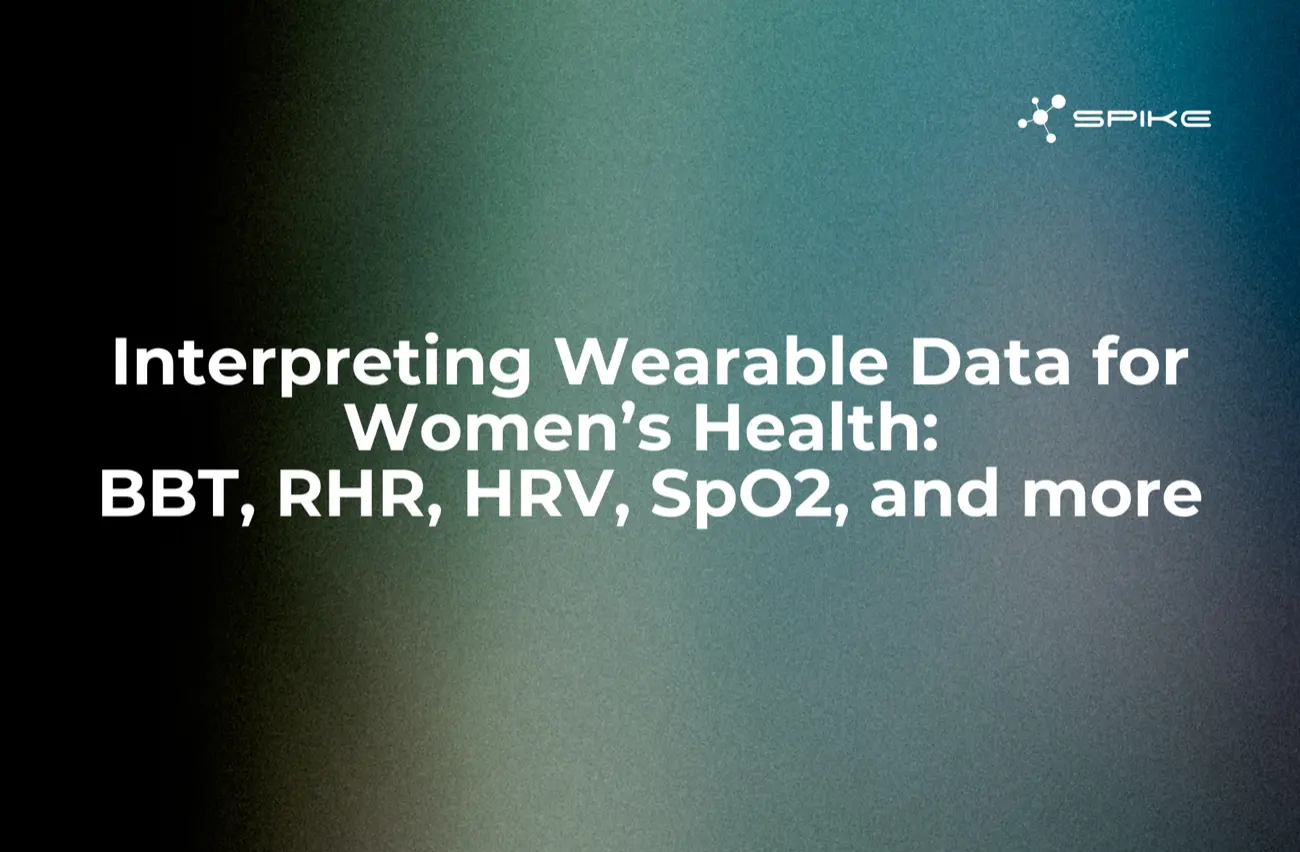Author

Full name
Job title, Company name

Our analysis of over 20 studies illustrates how female health apps can provide timely and precise advice across various life stages, including reproductive health, fertility and ovulation tracking, pregnancy monitoring, menopause management, and more. Additionally, we’ve explored ways to effectively visualize this data.
By leveraging wearable data to account for each woman’s unique health journey, apps have the opportunity to deepen user engagement, differentiate themselves in the market, and ultimately enhance women’s health outcomes through informed, personalized care.
Fertility and Ovulation Tracking: Use BBT, RHR, and HRV data to predict ovulation, assist with fertility planning, and monitor reproductive health.

Pregnancy Monitoring: Track key metrics like heart rate, SpO2, and respiratory rate during pregnancy, offering early insights into potential complications.

Menopause Management: As HRV and sleep patterns change during menopause, apps can provide tips for symptom management, like improving sleep or stress reduction techniques.

Lifestyle Recommendations: Apps can offer personalized recommendations for exercise, sleep, and nutrition based on activity levels and sleep quality throughout the menstrual cycle stages.
Oura, Whoop, Garmin, Polar, Biostrap: These wearables are highly recommended for tracking multiple metrics like BBT, RHR, HRV, SpO2, respiratory rate, and sleep quality, making them suitable for comprehensive fertility, pregnancy, and menopause management.
Apple HealthKit, Fitbit, Samsung Health: Also offer robust support for tracking key metrics but may not cover as many specific use cases for women’s health as Oura and Whoop.
Recognizing the individuality of each female body sets your app apart in a crowded market of health tracking applications. Rather than merely tracking menstrual cycles, focus on delivering personalized experiences that elevate women’s health management to a new level. By integrating with Spike, you can easily access valuable data collected from over 500 devices, providing a comprehensive array of insights allowing for real-time, data-driven guidance that enhances women’s reproductive health. We hope this article has clarified how these insights can enhance the development of female health apps.
Wearables track three key fertility indicators: Basal Body Temperature (BBT) shows temperature patterns that confirm ovulation (dropping slightly before and rising after ovulation due to progesterone), Resting Heart Rate increases by approximately 1.6% from follicular to luteal phases, and Heart Rate Variability decreases notably around ovulation. These combined metrics help predict ovulation more accurately than traditional calendar methods.
Wearables can track crucial pregnancy indicators including heart rate (which increases from 82 bpm at 12 weeks to 91 bpm around 34 weeks), respiratory rate (median 15 breaths per minute throughout gestation), and blood oxygen levels (SpO2 decreases from 98% at 12 weeks to 97% at 40 weeks). These metrics help identify potential complications early and monitor overall maternal health.
During menopause, wearables track Heart Rate Variability (which decreases and indicates increased cardiovascular risk), sleep quality (40-60% of menopausal women experience sleep disturbances), and stress levels. This data enables apps to provide personalized recommendations for symptom management, sleep improvement techniques, and stress reduction strategies tailored to this life stage.
Oura, WHOOP, Garmin, Polar, and Biostrap are highly recommended for tracking multiple women's health metrics including BBT, RHR, HRV, SpO2, respiratory rate, and sleep quality. While Apple HealthKit, Fitbit, and Samsung Health offer robust tracking capabilities, they may not cover as many specific women's health use cases as the specialized devices.
Apps can analyze sleep quality, activity levels, and stress indicators throughout menstrual cycle phases to offer tailored advice. For example, recommending gentle exercise during menstruation, optimizing workout intensity based on hormonal fluctuations, suggesting stress-reducing activities during PMS, and providing sleep hygiene recommendations to improve cycle regularity and reduce symptoms.
Advanced women's health apps leverage multiple wearable data sources to provide real-time, physiological insights rather than just calendar-based predictions. By integrating BBT, HRV, heart rate, sleep, and activity data, these apps can identify actual hormonal changes, predict ovulation more accurately, and provide personalized health recommendations based on each woman's unique patterns.
Spike provides access to data from over 500 wearable devices through a single integration, enabling developers to combine multiple health metrics essential for women's health tracking. This includes connecting with specialized devices like Ava's fertility bracelet and Incora Health's monitoring earrings, as well as mainstream wearables, allowing apps to deliver personalized, data-driven guidance across all stages of women's health.